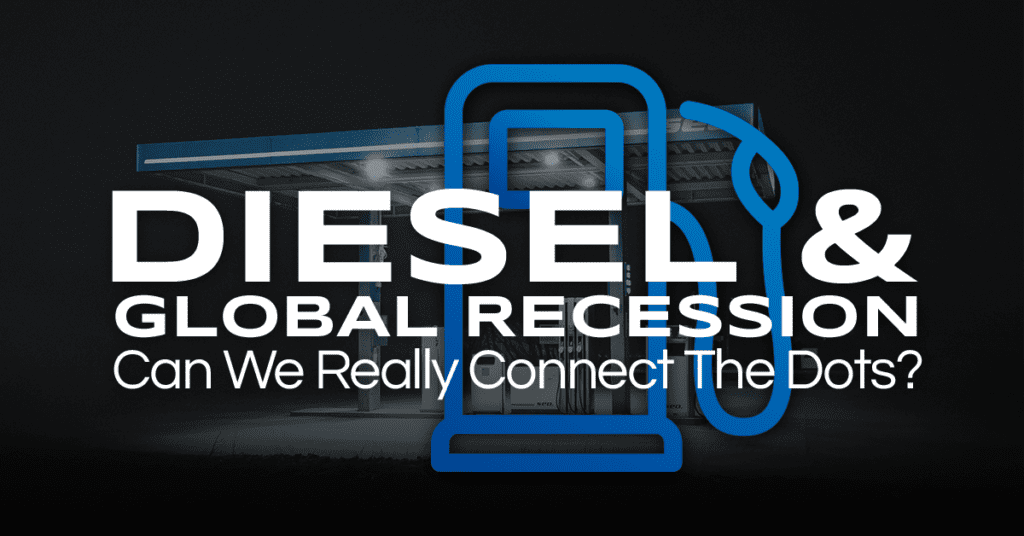
Many are turning their attention to China and before you stop reading, it’s not for the reasons you may think. Get ready as we take a closer look at the world of diesel consumption and its surprising connection to the global economy. Across the globe, from China to Europe and even the U.S. Could these shifts in the diesel market be a harbinger of economic troubles ahead? Keep reading as we take a level-headed and honest approach to exploring the fascinating connectivity between diesel consumption and the health of the world economy.
Diesel’s Crystal Ball: How Fuel Consumption Predicts Economic Health
Over the past few weeks, there has been a noticeable decrease in truck traffic on China’s highways . Beyond this, diesel’s premium to crude futures in Europe has dropped to the lowest level in over a year. Back home In the US, we’ve already seen a 2% contraction in diesel demand predicted by S&P Global Inc. This slump in diesel consumption is the largest of its kind since 2016, excluding the effects of the pandemic year in 2020.
This combination of news regarding the state of diesel prices has put recession-watchers on high alert. The weakening demand for diesel, which powers everything from commercial trucking fleets to construction equipment, has often been pointed out as an indicator when it comes to observing the state and health of the economy as a whole.
Trucking’s Titanic Role in Diesel
Trucking, unsurprisingly, accounts for a very significant portion of diesel demand. In the U.S. alone, trucking consumes around 70% of diesel use. The aforementioned drop in the number of trucks on Chinese highways, as reported by China’s Ministry of Transport, has already led to commercial diesel stockpiles reaching an eight-month high. Alongside this decline in demand, China has also seen an apparent easing of manufacturing activity in March.
Spending Shifts & Diesel Dilemmas
These downward trends seem to be echoing throughout much of the world. For example, in Europe, diesel demand has been significantly soft due to less of a need for heating. Beyond this, there are other overarching economic factors that have further slowed growth. The U.S. is no exception, as even our industry has been affected by declines in factory output, home construction, and retailers working off high inventories.
Consumer spending has had a noticeable impact on the consumption of diesel as well. Despite the pandemic’s mass-normalization of ordering goods, it seems that the pendulum of consumer spending is swinging in a new direction, moving away from pandemic inspired internet orders and placing a new focus on the less tangible things the world has to offer such as real world experiences and vacations
West Coast Worries
The drop in US diesel demand is expected to be especially pronounced on the West Coast, where tech-sector layoffs and an unfolding banking crisis have created financial stress. Diesel demand in this region is predicted to slump by 5% in 2023, more than twice the national average. US container imports, another must-watch in economic health, are also under pressure. Inbound shipments in Los Angeles currently sit at their lowest level since March 2020.
Before You Hit The Road…
As the weakening demand for diesel continues to fuel concerns about the potential of a recession across our world’s major economies, it’s quite clear that the relationship between diesel and the global economy is much more intricate and interconnected than may first meet the eye. As expert predictions continue to to funnel in, only time will tell. But, one thing is clear: all eyes are sure to be on diesel.
If you made it to this part of the article, we’d just like to take a moment to thank you for taking the time to read it. Be safe out there and as always, If you’re in search of CDL A, B, or warehouse positions, check out our open positions. And if you need staffing solutions for commercial driving or industrial positions, be sure to explore our offerings.



